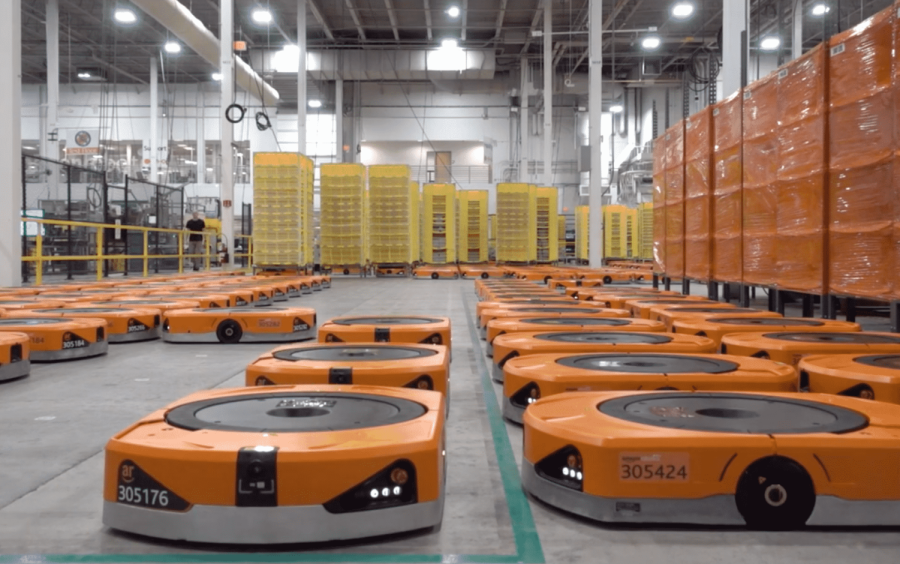Amazon Delivery Robots – an Alternative to Human Drivers?
February 23, 2022
*The opinions expressed within the content are solely the author’s and do not reflect the opinions and beliefs of the website or its affiliates.*
The demand for packages to arrive within two days from online shopping continues to grow, with over 200 million Amazon Prime subscribers as of 2021. Customers anxiously await their shipments and track their packages through their Amazon account, oblivious to the nightmare of grueling nine- to 11-hour shifts and impossible routes drivers are forced to navigate. These delivery van drivers often sacrifice their personal safety to meet their quotas determined by algorithms developed by Amazon. Due to the unreasonable expectations and stress Amazon places on its drivers, the e-commerce tech giant should consider automating deliveries instead of treating humans like robots.
Since 2018, the company has intentionally reduced its reliance on FedEx and UPS while attracting entrepreneurs to partner with them as third-party delivery service providers (DSP). Currently, the majority of Amazon’s deliveries are made through DSPs which provide Amazon with more control over the process. Van drivers told CNET that they can have more than 300 packages to deliver to as many as 200 locations with mapped out directions during a ten hour shift. This pace places a lot of pressure on the DSP owners to meet the quotas to avoid getting their contract pulled, which in turn pressures the drivers to exhaust themselves in order to meet these unreasonable expectations.
Like a scene from a dystopian society, video cameras, telematics devices, and smartphone apps monitor the drivers’ every move. AI-powered software dictates the number of packages a driver should be able to deliver per hour, and the system increases this number when young “industrial athletes” outperform the designated number. The tight schedule forces many drivers to give up bathroom breaks and resort to using bottles. Since safety is also a priority, Amazon’s system reports on their driving performance to discourage reckless driving. Any negative marks of texting while driving or other distractions lowers their score and their pay. However, sensors often incorrectly report sneezing or bumps on the road as distracted driving. Drivers have received infractions for suddenly braking to avoid hitting a child chasing a ball or an animal darting out in the road. According to drivers interviewed by CNET, in order to maintain the number of packages delivered, a majority of drivers wear their seat belts buckled behind them to reduce the time it takes to get in and out of the van, and upset neighbors by blocking driveways in crowded streets. They have even been bitten by dogs trying to put the package in a secure place for a resident. Unfortunately, Amazon’s engineering culture puts more trust in the data than the drivers’ reservations and other important intangibles that factor into the job.
Prime membership’s two day delivery promise has conditioned customers for instant gratification. Instead of waiting a week to receive the items ordered, people want the goods on their doorstep within 48 hours. The only way Amazon can keep pace with the surge of orders is to incorporate robots in their delivery system. They have recently acquired an AI start-up in Helsinki, Finland, to support the development of Scout, Amazon’s self-driving vehicle that can transport small packages to customers’ houses at a walking pace. Currently, Amazon only has two dozen engineers in Helsinki responsible for the research and development of Scout. Another company, Starship Technologies, uses similar robots that have already completed more than one million autonomous deliveries near college campuses as of January 2021. Amazon needs to put more effort and resources into autonomous delivery vehicles to accelerate the testing and adoption of the last mile delivery solution. While self-driving vans may not be ready to be deployed on the freeways quite yet, these small robots can help alleviate some of the issues drivers face in the final part of the residential routes where parking may be more of a problem. Investments in such autonomous systems can improve working conditions and relieve stress for the dedicated drivers while satisfying Amazon’s customers.





